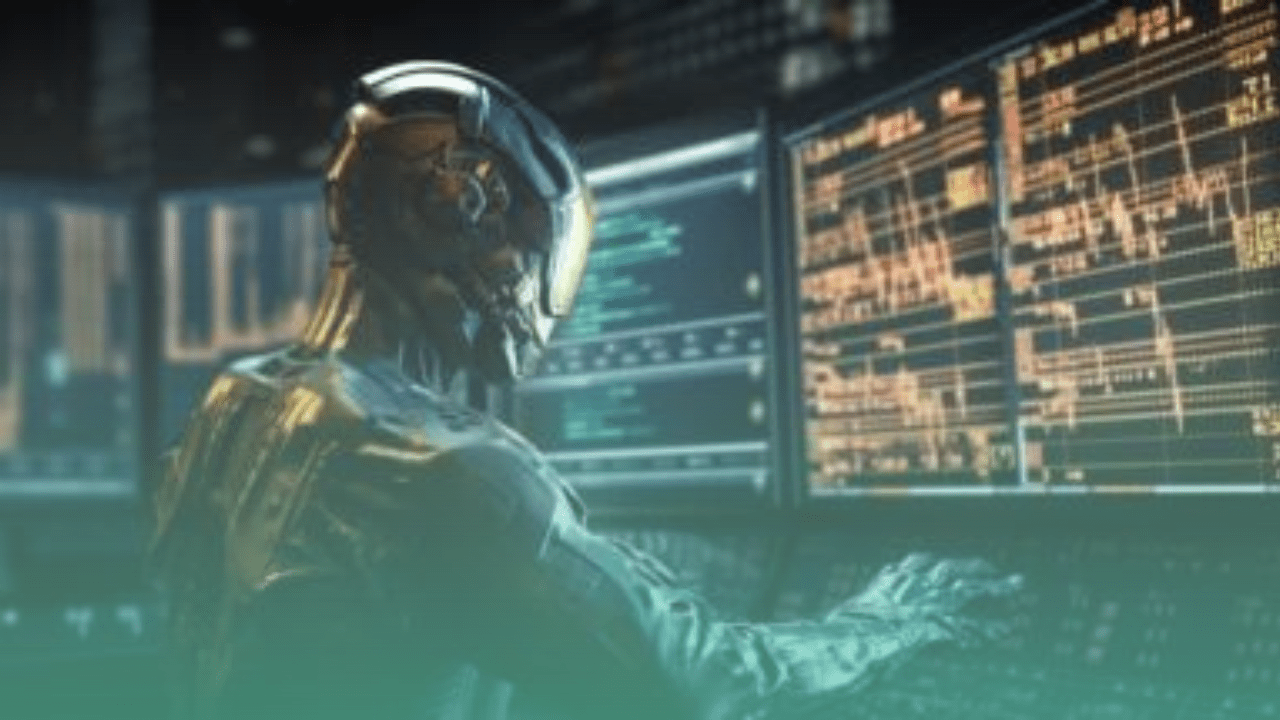Introduction
In today’s fast-paced financial markets, staying ahead of the curve is imperative for traders and investors. Traditional methods of trading are no longer sufficient to navigate the complexities of modern finance. This is where Machine Learning in Algorithmic Trading comes into play. This blog post delves deep into this exciting field, shedding light on its significance, applications, and potential.
Machine Learning in Algorithmic Trading
Machine Learning in Algorithmic Trading has emerged as a powerful tool in the financial world, redefining how trading strategies are developed and executed. This dynamic field combines the principles of artificial intelligence with the intricacies of financial markets to create algorithms that can analyze vast amounts of data and make split-second decisions.
One of the key advantages of using Machine Learning in Algorithmic Trading is its ability to process information that would be overwhelming for a human trader. These algorithms can sift through historical market data, news events, social media sentiment, and a plethora of other factors simultaneously. This analysis results in actionable insights that can inform trading decisions.
These machine learning models are designed to adapt to changing market conditions, ensuring they remain effective in various economic scenarios. They continuously learn from new data, refining their strategies and improving their accuracy over time. This adaptability is a significant asset in an ever-evolving financial landscape.
Moreover, the speed at which Machine Learning algorithms operate is a game-changer for high-frequency trading. In the world of high-frequency trading, even milliseconds can make a substantial difference in profitability. Machine Learning systems can execute trades at lightning speed, capitalizing on fleeting market opportunities that may be missed by human traders.
Another crucial aspect of Machine Learning in Algorithmic Trading is its role in risk management. These systems can identify potential risks in real-time and implement protective measures to mitigate losses. By doing automated trading, Machine Learning provides a valuable safety net in the volatile world of finance.
Overall, Machine Learning in Algorithmic Trading is not about replacing human traders but enhancing their capabilities. It complements human judgment with data-driven insights, helping traders make informed decisions. As technology continues to advance, the integration of Machine Learning in trading strategies becomes increasingly essential for staying competitive in today’s financial markets.
Benefits of Machine Learning in Algorithmic Trading
Machine Learning in Algorithmic Trading offers a multitude of benefits that are transforming the way traders and investors approach financial markets. Below, we delve into these advantages:
1. Enhanced Accuracy
One of the most significant advantages of using Machine Learning in Algorithmic Trading is the remarkable increase in accuracy. These algorithms can process and analyze vast amounts of data with precision, far beyond the capabilities of human traders. This accuracy results in more informed and data-driven trading decisions, ultimately leading to improved profitability.
2. Speed
In today’s fast-paced financial markets, speed is of the essence. Machine Learning algorithms execute trades in milliseconds, ensuring that traders can capitalize on even the most fleeting market opportunities. This speed advantage is particularly valuable in high-frequency trading, where split-second decisions can make a substantial difference in profits.
3. Risk Management
Risk is an inherent part of trading, but Machine Learning provides a robust framework for risk management. These algorithms can identify potential risks in real-time, ranging from market volatility to unexpected events. By automatically implementing risk-mitigation strategies, Machine Learning helps traders reduce potential losses and protect their portfolios.
4. Adaptability
Financial markets are highly dynamic, and strategies that work today may not be effective tomorrow. Machine Learning models excel at adapting to changing market conditions. They continuously learn from new data, refining their strategies and adapting to evolving trends. This adaptability ensures that Machine Learning systems remain effective and relevant over time.
5. Reduced Emotional Bias
Emotions can cloud judgment and lead to irrational trading decisions. Machine Learning systems are emotionless and data-driven, eliminating the impact of emotional trading. This reduction in emotional bias results in more rational and objective decision-making, ultimately enhancing trading outcomes.
Applications of Machine Learning in Algorithmic Trading
Machine Learning in Algorithmic Trading has a wide range of applications that are reshaping how trading strategies are developed and executed. Let’s explore some of the key areas where Machine Learning is making a significant impact:
1. Sentiment Analysis
Machine Learning is leveraged for sentiment analysis in Algorithmic Trading. It involves analyzing news articles, social media feeds, financial reports, and other textual data to gauge market sentiment. By understanding how the market perceives certain events or assets, traders can make more informed decisions. For example, if sentiment analysis detects a positive sentiment surrounding a particular stock, it may indicate a potential bullish trend.
2. Pattern Recognition
Machine Learning algorithms are adept at identifying complex patterns in historical market data. These patterns can be nearly impossible for human traders to discern due to their sheer volume and intricacy. By recognizing these patterns, Machine Learning models can develop trading strategies that capitalize on repeating trends, leading to profitable outcomes.
3. Portfolio Optimization
Optimizing an investment portfolio is a complex task that involves balancing risk and return. Machine Learning can help in this process by analyzing historical data and optimizing the mix of assets in a portfolio. These algorithms can consider various factors, including historical returns, volatility, and correlations between assets, to create portfolios that maximize returns while managing risk effectively.
4. High-Frequency Trading
High-frequency trading (HFT) relies on rapid execution of a large number of orders within fractions of a second. Machine Learning’s speed advantage is crucial in HFT, where timing is everything. These algorithms can quickly process vast amounts of data and execute trades with precision, capitalizing on fleeting market opportunities that are beyond the capabilities of human traders.
5. Risk Management
Identifying and managing risks in real-time is paramount in Algorithmic Trading. Machine Learning algorithms continuously monitor market conditions and assess the level of risk. When potential risks are detected, these systems can automatically implement risk-mitigation strategies, such as reducing position sizes or exiting trades, to protect the portfolio from losses.
6. Predictive Analytics
Machine Learning excels in predictive analytics, allowing traders to anticipate future price movements and market trends. By analyzing historical data and incorporating various market indicators, these algorithms can provide valuable insights into potential market developments. This information empowers traders to make informed decisions and adjust their strategies accordingly.
In Conclusion
In the ever-evolving landscape of financial markets, the adoption of Machine Learning in Algorithmic Trading has ushered in a new era of innovation and efficiency. This transformative technology has become the linchpin of modern trading strategies, offering a myriad of benefits and applications that redefine how traders and investors approach the markets.
Machine Learning, with its unparalleled ability to process vast datasets, recognize intricate patterns, and execute trades at lightning speed, has redefined the notion of accuracy and precision in trading. Gone are the days of gut feeling and intuition; today’s traders rely on data-driven insights that Machine Learning provides, resulting in better-informed decisions and, ultimately, improved profitability.





